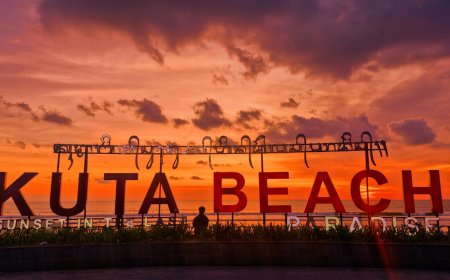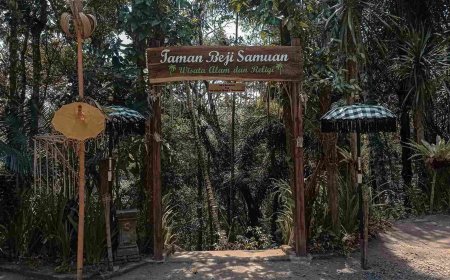Pura Kedatuan Raksa Sidhi: Spiritual Purification Site in Jatiluwih, Tabanan
Melukat is a spiritual ritual practiced by Hindus on the island of Bali with the aim of cleansing the soul and mind. This tradition is passed down through generations within the community. Melukat is typically performed at natural springs considered sacred, such as in Pura Kedatuan Raksa Sidhi.
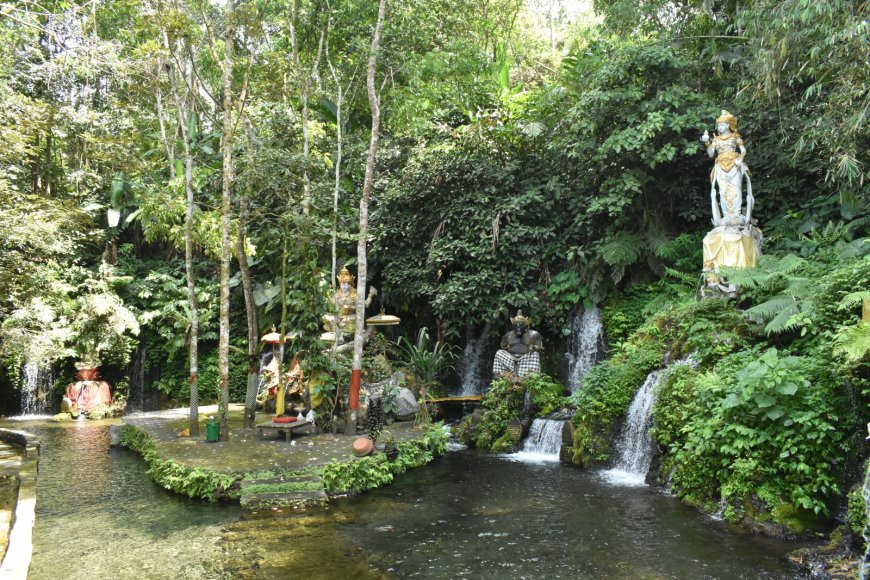
The Hindu's, especially on the island of Bali, are certainly familiar with the "Melukat" ceremony. "Melukat" is a ritual aimed at spiritually cleansing the soul and mind of humans. The word "Melukat" comes from "Sulukat," consisting of "Su" meaning good, and "Lukat" meaning purification. This tradition has been passed down through generations among Hindu's, with the purpose of eliminating any negative influences that may exist within a person. Generally, "Melukat" is performed at natural springs considered sacred by the surrounding community. As an example, the location discussed in this article is Pura Kedatuan Raksa Sidhi.
Pura Kedatuan Raksa Sidhi is located in Banjar Soka Kawan, Senganan Village, Penebel District, Tabanan Regency. Access to this temple is quite easy as it is close to the Jatiluwih tourist attraction, which can be reached in approximately 1 hour from Denpasar and 35 minutes from Tabanan. This temple is relatively new as its "Ngenteg Linggih" ceremony was conducted on February 13, 2023.
The history of this temple began in the 1990s when local communities and individuals meditating at Puncak Kedaton often observed distant lights. Upon further investigation, these lights were found to emanate from Beji Kedatuan. Therefore, initially, this Beji was known as Beji Sinar. Over time, an increasing number of devotees started coming for spiritual cleansing because the source of the spring in this purification area was believed to originate from Mount Sanghyang. Eventually, information about this temple spread widely, and after undergoing a considerable restoration process, Pura Kedatuan Raksa Sidhi emerged as the temple we see today.
In general, the temple area is divided into two main parts, the Beji section used for spiritual cleansing and the main temple section used for prayer activities before or after undergoing spiritual purification. Before engaging in prayers and spiritual cleansing at this temple, the people is required to perform a matur piuning first in Dukuh, which is the residence of Ida Dukuh Sakti, seeking permission to carry out activities in the surrounding area. Subsequently, people can go to the Beji section to undergo spiritual cleansing.
According to the information provided by Mangku Gede, the head mangku at Pura Kedatuan Raksa Sidhi, there are more than 10 springs (Pancoran) in Beji Kedatuan. The springs that need to be traversed for spiritual cleansing are as follows:
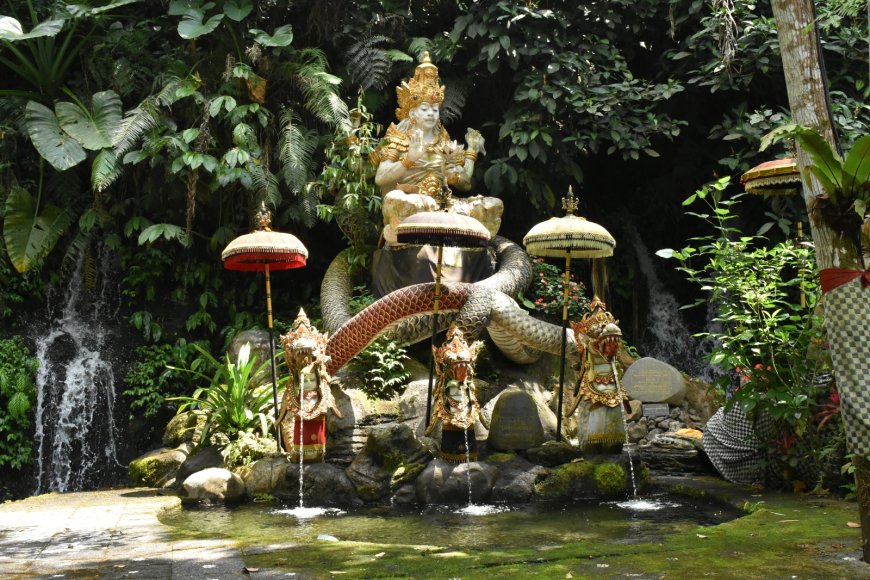
Penglukatan Sang Hyang Wisnu Suci (Photo Source: Author's Collection)
- Pancoran Ida Dukuh Sakti: Located behind the Dukuh, this is the first spring to be visited. It is known as "Panglukatan Pikiran Inguh" or Stress, believed to reduce mental burdens after undergoing cleansing here.
- Pancoran Sang Hyang Pewenang Tapa: Referred to as "Panglukatan Nunas Perti Sentana," devotees can seek blessings for descendants from Sang Hyang Pewenang Tapa Ibu Pertiwi.
- Kelebutan Bunda Kanjeng Ratu: Devotees can seek charisma or authority at this spring, known as "Panglukatan Nunas Kharisma or Wibawa."
- Kelebutan Ratu Niang Sakti: Devotees can seek healing, treatment, or protection, known as "Panglukatan Nunas Usadha."
- Penglukatan Buddha: Devotees can seek wisdom, known as "Panglukatan Nunas Kawicakasanaan utawi Tathagata."
- Pengluktaan Sang Hyang Semara: Devotees can seek romantic blessings, known as "Panglukatan Nunas Pengasihan."
- Penglukatan Dewi Gangga: Devotees can seek spiritual guidance at this spring.
- Penglukatan Brahma: Devotees can seek guidance for success.
- Penglukatan Leluhur: Devotees can seek forgiveness from ancestors, known as "Panglukatan Tebas Gering utawi Kutukan."
- Penglukatan Ratu Biang Mas Melanting: Devotees can seek smoothness in work and prosperity.
- Penglukatan Sang Hyang Wisnu Suci: This is the most beautiful cleansing with a sculpture of Lord Vishnu surrounded by artistic carvings of a three-headed dragon. Devotees can seek protection, known as "Panglukatan Sarwa Satru."
- Penglukatan Siwa Nilakanta: Devotees can seek removal of toxins.
- Penglukatan Betari Danu: Devotees can seek blessings related to agriculture.
- Penglukatan Sang Hyang Aji Saraswati: This spring has a stunning sculpture of Goddess Saraswati. Devotees can seek knowledge, known as "Panglukatan Landep Ing Jnana."
- Penglukatan Hyang Wismaya: At the top of this spring is a statue of Tualen, a famous figure in Balinese wayang tradition known for giving wise advice. Devotees can seek enlightenment.
Lastly, there are the Penglukatan Sang Hyang Siwa Metung and Penglukatan I Sastra Tunggal Utama. After completing the purification ceremony, the devotees can change their clothes in a specially provided area. Following that, they can proceed to the next stage, which is go to the temple section to perform prayers.
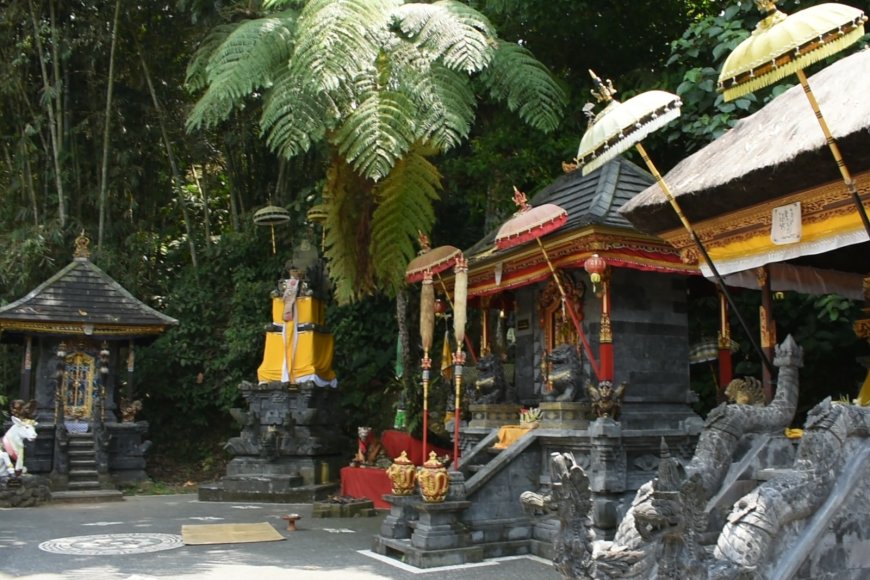
The temple section of Pura Kedatuan Raksa Sidhi (Photo Source: Author's Collection)
In this temple, there are several sacred structures such as Gedong Siwa, Padma, Lingga Yoni, Pelinggih Buddha, and Pelinggih Pepelik. Additionally, there is a Sacred Pavilion used for meetings, Ida Pedanda Nganteb, and similar purposes. After performing the purification ceremony, the community engages in prayers with the intention of expressing gratitude or "matur suksma" for being granted permission to undergo spiritual cleansing and receive blessings at the temple.
People can visit Pura Kedatuan Raksa Sidhi on holy days such as Purnama (full moon), Tilem (new moon), Kajeng Kliwon, and Banyu Pinaruh. These days are considered auspicious for undergoing the purification ceremony as part of the self-cleansing process. Among the things to prepare are offerings, including three pejati, canang, and other supporting items like spare clothes. It's important to note that the journey to this temple is not just a physical trip but also a profound and meaningful spiritual journey.





















